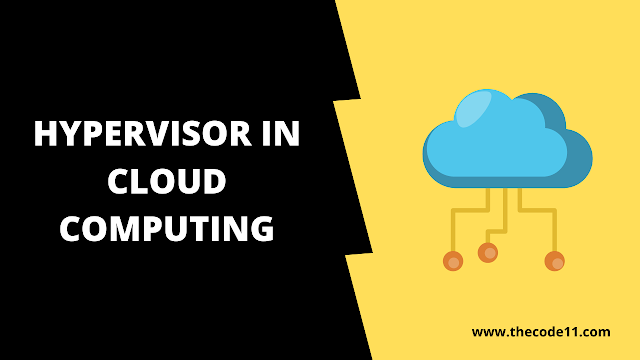In this tutorial you are going to learn about Hypervisor in Cloud Computing.
Introduction
A Hypervisor is a piece of computer software, firmware or hardware that creates and runs on virtual machines. A hypervisor is a function which abstracts operating systems and applications from underlying computer hardware.
- Hypervisors use the thin layer of code in software or firmware to allocate resources in real-time as the traffic cop that controls input and output and manages the memory space.
- With hypervisor we can run Linux, Windows and macOS on a single physical x86 machine. Each one of these virtual machines or operating systems you will be able to run its own program
- In reality, it is a hypervisor that is allocating resources to its virtual devices.
- Hypervisors will allow us to have several virtual machines working together on only one piece of computer hardware/ hardware computer. A computer device is known as a host machine if a hypervisor runs one or more virtual machines on it and each virtual machine is called a guest machine.
- Hypervisor is highly popular because of Linux and Unix.
- Around 2005, Linux and Unix system started using virtualization technology to expand hardware capabilities, control costs and improved reliability and security that hypervisors provided to systems.
What can Hypervisor do?
- Hypervisor has an access of all the physical devices that is relayed on/ residing on a server
- Hypervisor also access the memory/disk
- It can control all aspects and parts of the virtual machines
- The hypervisors are the software used in hardware virtualization
Hypervisor, with the help of its special feature, allows several virtual machines to operate on a single physical virtual machine. So, it helps us to reduce:
- The space efficiency
- The energy users
- The maintenance requirements of the server.
Hypervisors are a key component of the technology that enables cloud computing since they are a software layer that allows one host device to support several virtual machines at the same time.
Hypervisors allow IT’s to retain control over the infrastructure of the cloud environment and have control over the processes and also on sensitive data while making the application on clouds which are accessible by the users in a virtual/online environment.
Hypervisor also helps in the rapid migration of the applications to the cloud as being a part of a virtualized platform.
As a result, the cloud business will take an advantage in many ways. Such as lower hardware costs, improved accessibility and increased scalability for a quick return on investment.
Types of Hypervisors
There are two types of hypervisors:
- Type 1 hypervisor
- Type 2 hypervisor
Type 1 Hypervisor:
It is also known as Base Metal or Native hypervisor. This type of hypervisor will be used for maximum companies and enterprises.
Type 1 hypervisors will be running directly on the system hardware. GOS (Guest operating system) runs on another level which is a level higher/above the hypervisor
VMware ESX: It is a Type 1 hypervisor that runs on the host server hardware without an underlying OS.
Type 1 hypervisors act as their own operating system.
A virtualization layer is provided by ESX which abstracts the CPU storage, memory and networking resources of the physical host into multiple virtual machines.
Type 2 Hypervisor:
Type 2 hypervisors are the ones that run within a conventional OS environment, and the host that provides.
Examples of Type 2 hypervisors are VMWare workstation, Oracle, VirtualBox and Microsoft Virtual PC.
This article on Hypervisor in Cloud Computing is contributed by Hemalatha P. If you like TheCode11 and would like to contribute, you can also write your article and mail to thecode11info@gmail.com

